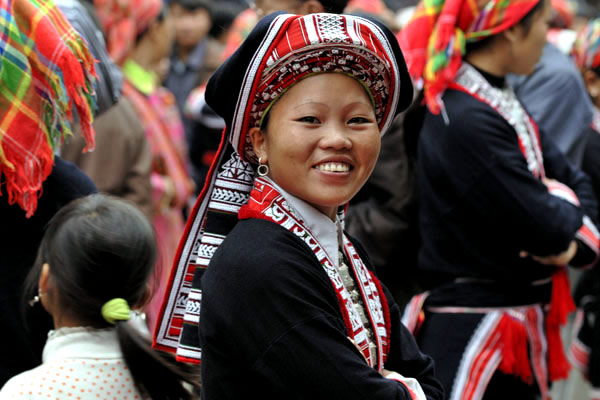

INTRODUCTION TO VIETNAM BY ORIENTAL BRIDGE
Geography
Stretching on 331 688 km² (128 066 sq miles), Vietnam can be divided into 3 regions, corresponding to the ancient historical ones: the South (former Cochinchina), the Center (former Annam), and the North (former Tonking). It is a very mountainous country (80% of its superficy), mainly covered with tropical forests (42%).
The South, with its capital of Ho Chi Minh City (former Saigon), is divided into the lowlands of the Mekong Delta and mountains covered with extensive forests. The Mekong Delta, covering about 40,000 km², is a low-level plain not more than three meters above sea level at any point and crisscrossed by a maze of canals and rivers. The entire delta is a region of lush rice fields, orchards, and swamps.
The Center, capital Danang, is mostly composed of highlands with a few small coastal plains and magnificent beaches.
The North, capital Ha Noi, consists mostly of a large coastal plain formed by the delta of the Red River, highlands, and mountains covered with jungle (highest peak: Fan Si Pan, located in the Lao Cai Province, 3,143 m - 10,312 ft). The delta of the Red River (Sông Hồng), a flat, triangular region of 15,000 km², is smaller but more intensely developed and more densely populated than the Mekong Delta. Once an inlet of the Gulf of Tonkin, it has been filled in by the enormous alluvial deposits of the rivers over a period of millennia, and it advances one hundred meters into the Gulf annually. It is in that area that stretches the World Heritage Site of Halong Bay and the amazing site of Tam Coc, “Halong Bay on Land”.
Climate
Because of differences in latitude and the marked variety of relief, the climate varies considerably from the north to the south.
The North:
- Perfect in October-November and April-June: temperatures between 21 and 28º.
- December to March: rather sunny winter, but cold (12-18º in the delta, 5-12º in the mountains).
- July to end of September: is “summer” season; 30-40º is the norm, with sometimes violent but generally short rainfalls and coastal typhoons.
The Center:
- February to May is the best period, the worst being between September and end of January, when it rains often and heavily (frequent typhoons in September and October). It is noticeably cooler in the Highlands (Dalat, Ban Mê Thuôt) than on the coast.
The South:
Temperatures in the southern plains (Ho Chi Minh City and the Mekong Delta) vary less over the course of a year.
- Best season from December to April, March and April being the hottest months (35º average).
- Worst period from July to September: very hot and humid.
Population and Religion
Vietnam counts 100 million inhabitants. 86% of the population is Viet (Khin), who are concentrated in the river deltas and the coastal plains. The rest is composed of 12% of 54 ethnic minorities such as the H’mong, the Thai, the Dao, and the Giarai, who live in the mountains and have kept their culture intact in all its aspects, and 2% Chinese.
Though the country is officially atheist, many religions cohabit in Vietnam, from Buddhism to Confucianism, Catholicism (8% of the population), Taoism, Animism (Mountain Tribes), and a few Muslims. Religious or not, Vietnamese have kept their oldest form of religion, the Cult of the Ancestors, and seeing a crucifix above the Ancestors Shrine is not an abnormality.
Though the country is officially atheist, many religions cohabit in Vietnam, from Buddhism to Confucianism, Catholicism (8% of the population), Taoism, Animism (Mountain Tribes), and a few Muslims. Religious or not, Vietnamese have kept their oldest form of religion, the Cult of the Ancestors, and seeing a crucifix above the Ancestors Shrine is not an abnormality.
Visa
The citizens of the following countries do not need a visa (visa exemption) for sojourns of 45 days maximum: Belarus, Denmark, Finland, Germany, Italy, Japan, Norway, Russia, South Korea, Spain, Sweden, UK and Republic of Ireland. All other foreigners need a visa to enter Vietnam. The normal tourist visa is for 1 month. It can be obtained either at a consulate or with an E-visa (valid for 90 days). Business visas are for 1 to 3 months and can only be obtained from consulates.
Health and Medical Facilities in Vietnam
Malaria is present only in very small areas in the jungle; therefore, it is not a risk any longer. It is recommended to drink only bottled water. If you are on a special medicine, bring it with you, it might not be available here. The main cities have excellent hospitals, and small clinics can be found everywhere in the countryside.